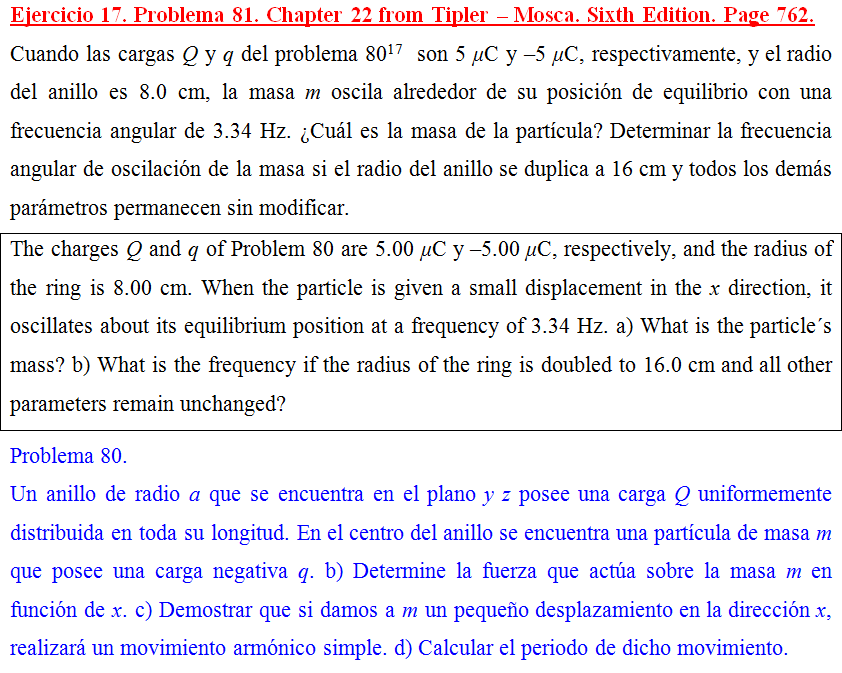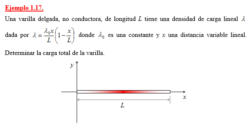Description
Problema 81. Chapter 22 from Tipler – Mosca. Sixth Edition. Page 762.
Cuando las cargas Q y q del problema 80 son 5 μC y –5 μC, respectivamente, y el radio del anillo es 8.0 cm, la masa m oscila alrededor de su posición de equilibrio con una frecuencia angular de 3.34 Hz. ¿Cuál es la masa de la partícula? Determinar la frecuencia angular de oscilación de la masa si el radio del anillo se duplica a 16 cm y todos los demás parámetros permanecen sin modificar.
The charges Q and q of Problem 80 are 5.00 μC y –5.00 μC, respectively, and the radius of the ring is 8.00 cm. When the particle is given a small displacement in the x direction, it oscillates about its equilibrium position at a frequency of 3.34 Hz. a) What is the particle´s mass? b) What is the frequency if the radius of the ring is doubled to 16.0 cm and all other parameters remain unchanged?
Problema 80.
Un anillo de radio a que se encuentra en el plano y z posee una carga Q uniformemente distribuida en toda su longitud. En el centro del anillo se encuentra una partícula de masa m que posee una carga negativa q. b) Determine la fuerza que actúa sobre la masa m en función de x. c) Demostrar que si damos a m un pequeño desplazamiento en la dirección x, realizará un movimiento armónico simple. d) Calcular el periodo de dicho movimiento.
A stationary ring of radius a lies in the y z plane and has a uniform positive charge Q. A small particle that has mass m and a negative charge –q is located at the center of the ring. b) Find the force on the particle as a function of x. c) Show that if the particle is given a small displacement in the +x direction, it will perform simple harmonic motion. d) What is the frequency of that motion?





Reviews
There are no reviews yet.